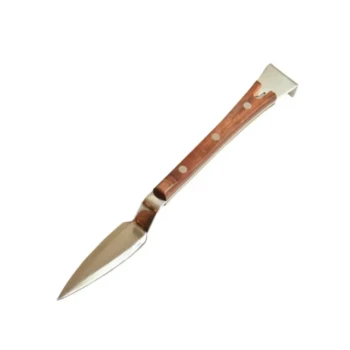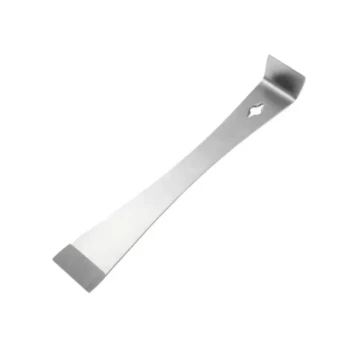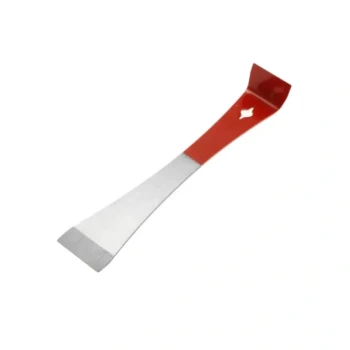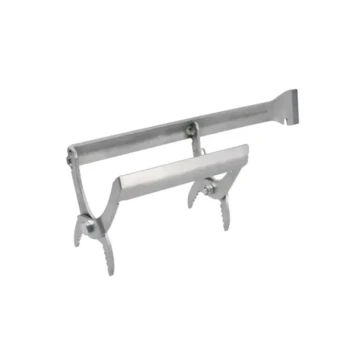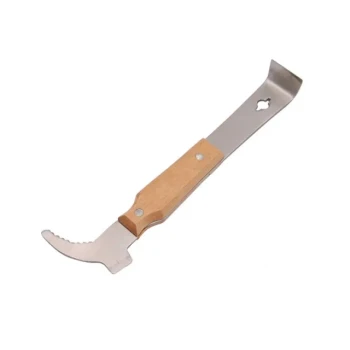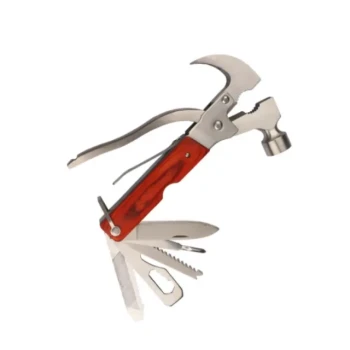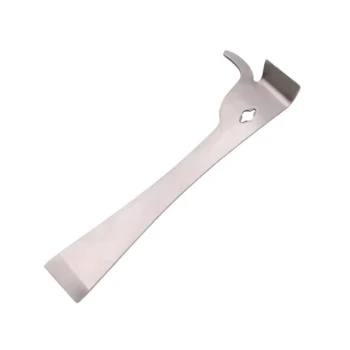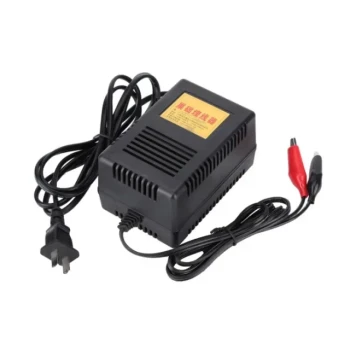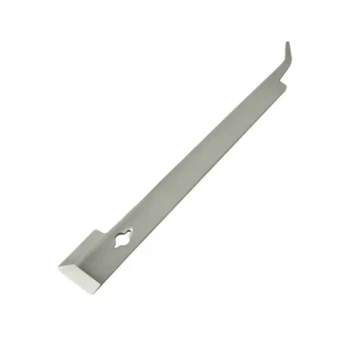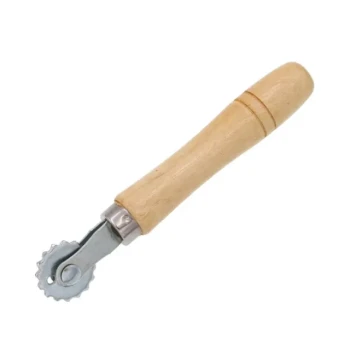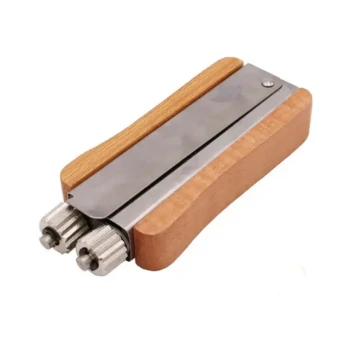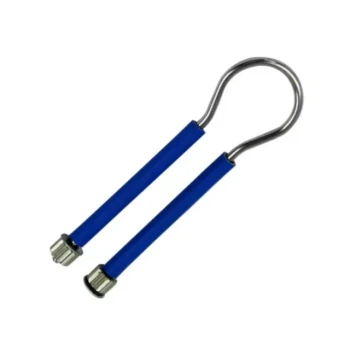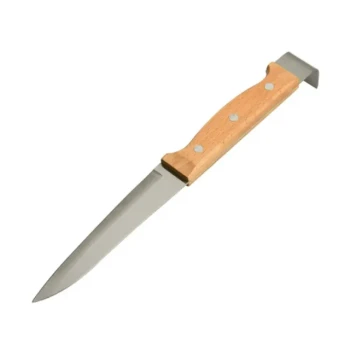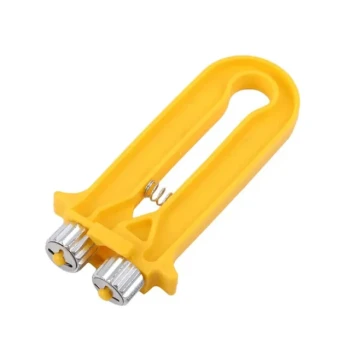When bees build comb between frames, it's almost always a direct response to a problem with spacing or structure within the hive. They are not making a mistake; they are either correcting a spatial issue you've unintentionally created or are building for better environmental control, such as improving airflow in hot weather.
The core reason for bees building comb between frames is a violation of "bee space"—the precise 3/8-inch (approx. 9.5mm) gap they naturally maintain. When this space is incorrect, bees will either fill it with excess comb or seal it with propolis.
The Core Principle: Understanding "Bee Space"
Bee behavior inside the hive is governed by an instinctual adherence to a specific measurement. Understanding this is the key to preventing most structural problems.
What is Bee Space?
"Bee space" is the crawl space bees require to move and work efficiently. It's the gap they will consistently leave between two surfaces of comb.
This precise distance prevents them from sealing the gap with propolis (the resinous glue they make) or filling it with extra comb.
The Impact of Too Much Space
If the gap between frames, or between a frame and the hive wall, is larger than 3/8 of an inch, the bees perceive it as an empty, unused cavity.
Their instinct is to fill this void with what is known as burr comb or cross comb. This is the comb you see connecting frames where it shouldn't be.
The Impact of Too Little Space
Conversely, if a space is smaller than about 1/4 of an inch, bees cannot pass through it easily.
They will treat this gap as a crack in the hive wall and will seal it shut with propolis to block drafts and pests.
Why Your Bees Are Building Cross Comb
While incorrect bee space is the most frequent cause, other factors can trigger this building behavior.
Incorrect Frame Management
The most common beekeeper error is not pushing frames together properly. Frames should be pushed snugly to the center of the hive box, ensuring a consistent and correct bee space between each one.
Any large gaps left at the sides of the box or between frames invites the bees to build their own structure.
An Unlevel Hive
Bees build their comb perfectly plumb, guided by gravity. If your hive is not level, the bees will still build straight down.
This means the comb they build will not be parallel to the angled frames, inevitably leading it to connect with an adjacent frame.
Environmental Regulation
As the reference material notes, bees may intentionally build cross comb to regulate their environment. This is a deliberate architectural choice.
In very hot climates, wavy cross comb can increase structural stability and create channels that help the colony manage airflow and humidity more effectively throughout the hive.
How to Correct and Prevent the Problem
Fixing cross comb is crucial for performing hive inspections without damaging comb, brood, or the queen.
The Correction Process
Intervene as soon as you spot significant cross comb. Gently smoke the bees off the area to calm them.
Use your hive tool to carefully cut the unwanted comb away from the frames. If the comb contains brood or honey, you can attach it to the inside of an empty frame using rubber bands. The bees will reattach it properly, and you can remove the bands later.
Prevention Is the Best Strategy
Always ensure your hive is perfectly level. When adding or inspecting frames, push them firmly together in the center of the box.
If you remove a frame, replace it immediately or use a follower board to fill the gap. Never leave a large, empty slot in the hive body.
Making the Right Choice for Your Hive
Your response should be based on the scale of the problem.
- If your primary focus is routine maintenance: Scrape off small bits of burr comb from the tops of frames during every inspection to maintain correct bee space.
- If your primary focus is fixing a major issue: You must intervene to cut out large sections of cross comb and re-secure any valuable comb onto a proper frame.
- If your primary focus is prevention: Ensure your hive is level and that all your frames are managed to maintain a consistent 3/8-inch gap between them.
Understanding and respecting the bees' need for their specific space is the foundation of effective and non-disruptive beekeeping.
Summary Table:
| Cause of Cross Comb | Impact on Hive | Prevention Strategy |
|---|---|---|
| Incorrect Bee Space (Gap > 3/8 inch) | Burr comb fills voids, hindering inspections | Push frames snugly together in the center of the box |
| Unlevel Hive | Comb builds off-angle, connecting frames | Ensure hive is perfectly level |
| Environmental Regulation (e.g., heat) | Bees create comb for airflow/stability | Monitor hive conditions in extreme climates |
Struggling with persistent cross comb? HONESTBEE supplies durable, precision-spaced beekeeping equipment to commercial apiaries and distributors. Our wholesale-focused operations ensure you get reliable frames and hive components that maintain proper bee space, reducing maintenance and boosting hive health. Contact our expert team today for wholesale pricing and solutions tailored to your apiary's needs!
Related Products
- HONESTBEE Premium Italian Style Hive Tool with Hardwood Handle
- Professional Stainless Steel Pry-Bar Hive Tool
- HONESTBEE Advanced Ergonomic Stainless Steel Hive Tool for Beekeeping
- HONESTBEE Professional Long Handled Hive Tool with Precision Cutting Blade
- Professional Steel Pry-Bar Hive Tool with Painted Grip
People Also Ask
- How should beekeepers handle bees when using a hive tool? Master Calm, Deliberate Techniques
- What is the use of hive tool in beekeeping? The Essential Multi-Tool for Every Beekeeper
- What are some common uses of a hive tool? Essential Multi-Purpose Tool for Every Beekeeper
- What is the purpose of a hive tool in beekeeping? The Essential Multi-Purpose Key for Your Apiary
- What is the purpose of the small hole in a hive tool? It's a Built-In Nail Puller
